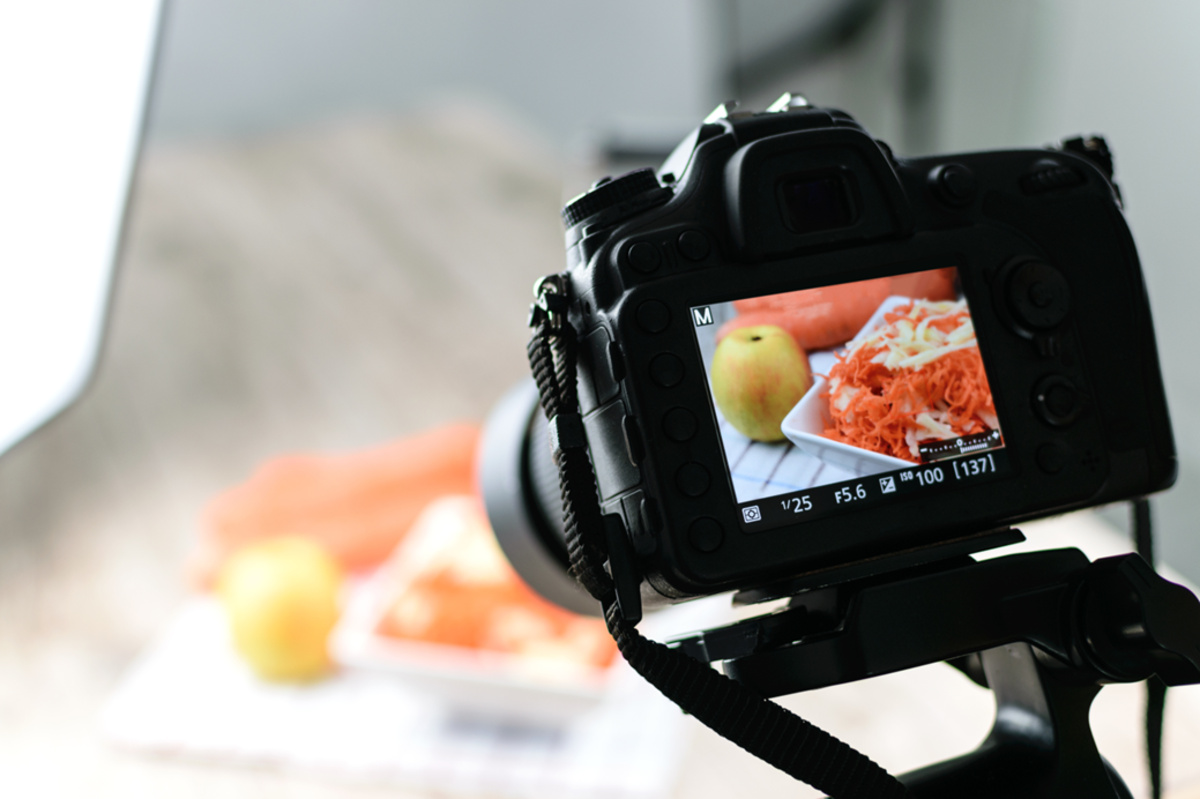Blog
From Plate to Pixel: Mastering the Essentials of Food Photography
Food photography has become one of the most influential
forms of visual storytelling in the digital age. From restaurant menus and
cookbooks to Instagram feeds and online recipes, the way food is photographed
shapes not only how we perceive it but also how we connect with the people and
brands behind it.
What once was a specialized niche for magazines and
advertising has now become an essential skill for chefs, bloggers, marketers,
and even hobbyists. With today’s technology and platforms, anyone can share
beautifully styled meals with the world. The challenge is learning how to
transform a plate into a compelling image that excites the senses and tells a
story.
Why Food Photography Matters
Food is emotional. It’s tied to comfort, celebration,
culture, and community. A strong food photograph taps into those emotions,
influencing perception before a single bite is taken. The brighter the greens,
the juicier the meats, the smoother the frosting—all of these details affect
how appetizing the food appears.
In marketing, food photography plays an even bigger role.
A well-crafted image can sell a dish, drive engagement on social media, or
inspire a purchase decision in an instant. Conversely, a poorly lit or
uninspired photo can make even the most delicious meal appear dull.
The Foundations of Food Photography
Lighting is Everything
Light determines the mood, texture, and vibrancy of food
photography. Natural light is often the best choice, particularly diffused
daylight near a window. It provides a soft glow that makes food appear fresh
and natural.
For those working indoors or after hours, artificial
lighting can replicate this effect. Continuous LED lights or softboxes are
great tools to control brightness and shadows. The key is avoiding harsh
overhead light that flattens food or creates unappealing glare.
Composition and Styling
The way food is arranged and framed has a direct impact on
its appeal. Classic rules of photography, such as the rule of thirds, help
guide the viewer’s eye. Props, utensils, and surfaces add context, but they
shouldn’t distract from the hero of the shot—the food itself.
Angles also matter. Overhead shots work well for flat
dishes like pizzas or charcuterie boards, while a 45-degree angle highlights
depth in burgers, cakes, or layered desserts. Straight-on shots are ideal for
tall items like stacks of pancakes or cocktails.
Color and Contrast
Food is naturally colorful, and photography should enhance
that. Pairing complementary colors, like red tomatoes against green basil,
creates visual harmony. Contrast also draws attention: a bright salad on a dark
plate, for instance, makes the colors pop.
Styling with garnishes, sauces, or textured backgrounds
can further highlight colors and create depth. These details transform an
ordinary dish into a striking visual.
Storytelling Through Food Photography
Great food photos don’t just show a dish; they tell a
story. A steaming bowl of soup on a rustic wooden table might convey warmth and
comfort, while a minimalist shot of sushi on a sleek white plate suggests
sophistication.
Storytelling comes through choices in background, props,
and even editing. A brand focused on sustainability might highlight ingredients
sourced from farmers’ markets, styled casually with natural lighting. A
high-end restaurant may prefer dramatic lighting and luxurious textures to
match its image.
By thinking beyond the plate, photographers can capture
the emotions and experiences that food represents.
Tools of the Trade
While professional cameras offer more control, many food
photographers today use smartphones with excellent results. The latest phones
come equipped with advanced lenses and editing software that make capturing
detail easier than ever.
For those wanting to invest in gear, a DSLR or mirrorless
camera with a macro lens allows for close-ups that highlight texture. Tripods
help keep shots steady, especially in low light. Small reflectors or white
boards bounce light and reduce shadows.
Editing tools, from professional software like Lightroom
to mobile apps, allow fine-tuning of brightness, color balance, and sharpness.
Subtle editing enhances a photo, but heavy-handed filters can make food look
artificial.
The Role of Authenticity
Modern audiences crave authenticity. While perfectly
polished food photography has its place in advertising, consumers also value
images that feel real and relatable. Showing a slightly messy cutting board, a
spoon mid-stir, or steam rising from a plate creates intimacy and realism.
This authenticity is particularly important for social
media and blogs, where connection matters as much as presentation. Striking a
balance between styled and approachable ensures food looks both aspirational
and achievable.
Stock Photos in Food Photography
Original photography is ideal, but not every project
allows for a custom photoshoot. In these cases, high-quality stock photos
can be incredibly useful. When chosen carefully, they provide professional
polish and consistency across marketing channels. For example, a small café
updating its website might combine original shots of its signature dishes with
stock images of general lifestyle scenes, like families enjoying meals or
ingredients displayed artfully.
Far from being generic placeholders, the best stock photos
complement brand storytelling, filling visual gaps and ensuring every
touchpoint feels cohesive.
Adapting Food Photography for Different Platforms
The same dish might need to be photographed differently
depending on where the image will be used.
·
Social Media. Bright,
bold, and shareable images work best. Eye-catching overhead shots are
particularly popular on Instagram.
·
Websites and Menus.
Clarity is key—viewers need to quickly understand what they’re ordering. Clean
backgrounds and accurate representation matter most here.
·
Advertising. These
shots can be more stylized, using props and dramatic lighting to create an
emotional pull.
·
Print Media. Higher
resolution and more attention to detail are required to maintain quality in
print.
Understanding the platform ensures the photo delivers the
right message to the right audience.
Common Mistakes to Avoid
Even experienced photographers sometimes fall into traps.
Here are some pitfalls to watch for:
·
Overcrowding the frame.
Too many props or elements distract from the food.
·
Inconsistent lighting.
Mixing light sources can create unnatural tones.
·
Over-editing. Heavy
filters or excessive saturation can make food look fake.
·
Ignoring freshness.
Wilted herbs, melted ice cream, or dull garnishes reduce visual impact.
Avoiding these mistakes ensures that food looks as
appetizing as possible.
The Future of Food Photography
Technology continues to push food photography forward.
Augmented reality (AR) and virtual reality (VR) may allow consumers to view
dishes in 3D before ordering. Artificial intelligence is helping edit and even
generate images faster than ever.
Yet, despite these advances, the fundamentals remain the
same: good lighting, thoughtful composition, and a clear story. Whether
captured with a smartphone or a professional camera, the essence of food
photography lies in making people crave what they see.
Final Thoughts
From restaurants and recipe bloggers to packaged food
brands and influencers, food photography is an essential skill in today’s
visual-first culture. It shapes how we perceive taste, influences purchasing
decisions, and tells stories that go beyond the plate.
Mastering the essentials—lighting, composition, color,
storytelling, and authenticity—transforms ordinary meals into extraordinary
visuals. Whether you’re using your smartphone for a quick Instagram shot,
hiring a professional photographer, or incorporating carefully chosen stock
photos for consistency, the goal remains the same: to capture food in a way
that excites the senses and creates connection.
In the end, food photography is both an art and a craft.
It requires practice, patience, and a keen eye for detail. But the reward is
powerful: images that not only look delicious but also make people feel
something before they take a single bite.





Comments